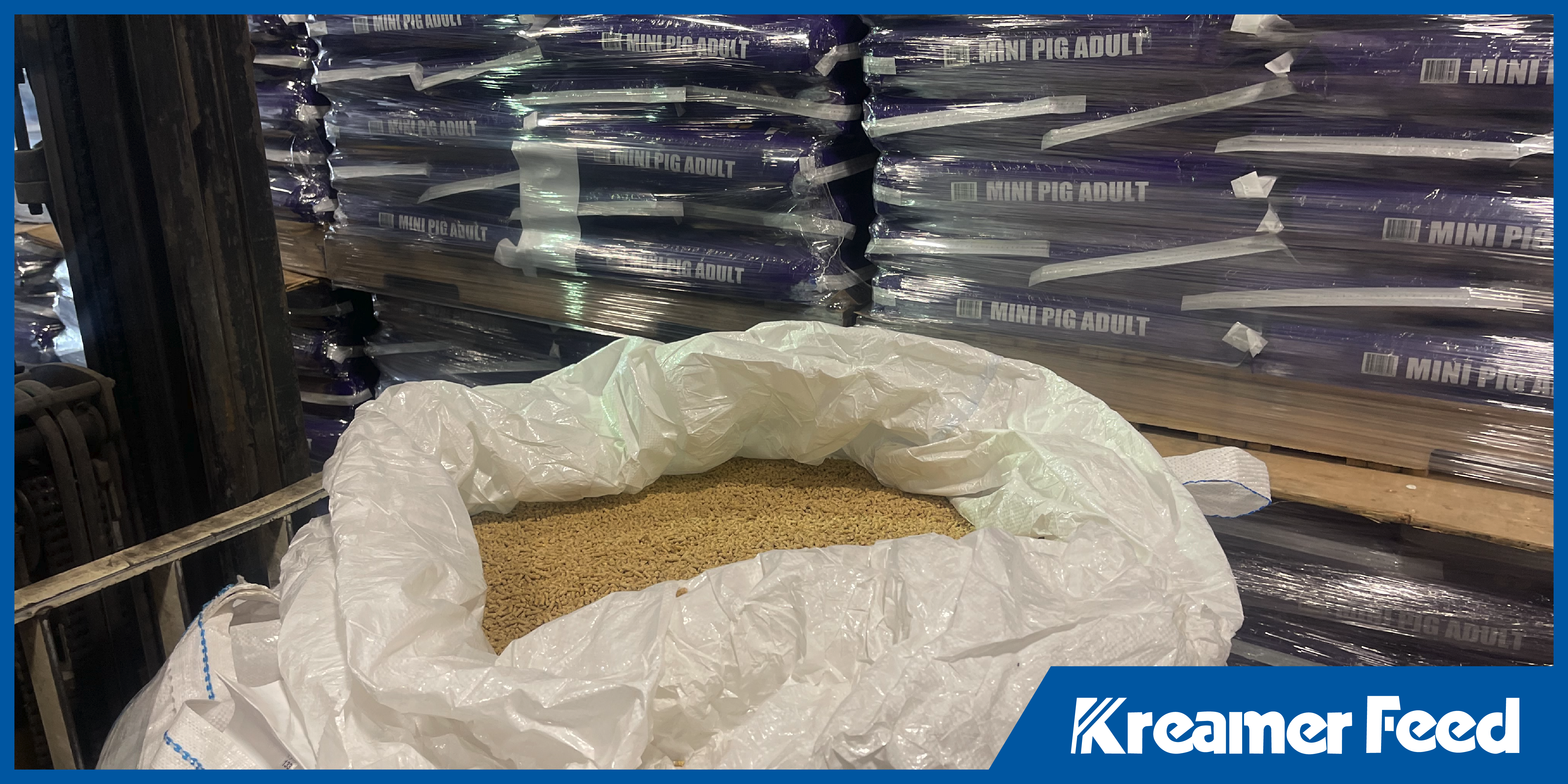
At Kreamer Feed, we’ve spent nearly 80 years perfecting the art of crafting high-quality organic feed that supports the health and productivity of your livestock. As a family-owned business, we understand that your animals’ well-being is your top priority. That’s why we’re here to help you with every aspect of animal care—starting with one of the most important but often overlooked components: how to store animal feed properly.
Proper feed storage not only ensures that your animals get the nutrients they need, but also extends the livestock feed shelf life and prevents costly feed spoilage. When stored incorrectly, feed can lose its nutritional value or become contaminated with mold or pests. That’s why we’ve put together some of the best feed storage tips to help you maintain the highest standards of care for your animals.
Understanding the Importance of Proper Feed Storage Conditions
Whether you’re feeding poultry, goats, or any other livestock, ensuring that your feed stays fresh is crucial to your animals’ health. Proper feed storage conditions prevent spoilage, preserve essential nutrients, and protect the feed from external contaminants. Poor storage can lead to mold, pests, and even toxicity, which could have serious health consequences for your animals.
As a trusted leader in organic feed, Kreamer Feed knows that feeding your livestock the best nutrition starts with taking care of the feed itself. Let’s dive into how you can achieve that by storing your feed properly.
1. Keep Feed in a Cool, Dry Place
One of the most important factors when learning how to store animal feed is temperature control. Feed should be kept in a cool, dry area that is well-ventilated. Excess heat or moisture can cause feed to spoil, lose its nutritional value, and attract pests.
When possible, store your feed in an area with stable temperatures—ideally between 50°F and 70°F. Avoid storing feed directly on the floor, where moisture can accumulate. Instead, use pallets or other raised storage options to keep it off the ground. This simple step can help protect your feed from humidity and moisture, which are primary causes of mold growth.
2. Use Sealed, Airtight Containers
When storing feed, one of the best ways to protect it from contaminants like mold or pests is to use sealed, airtight containers. These containers will help maintain freshness and prevent air from getting inside, which can degrade the quality of your feed over time.
For larger quantities, consider using metal or plastic bins with secure lids. Not only will these containers protect the feed from air exposure, but they’ll also help to keep rodents and insects away.
3. Rotate Your Feed Stock
At Kreamer Feed, we know that you’re committed to providing your animals with fresh feed. To make sure you’re always using the oldest feed first, practice the principle of “first in, first out” (FIFO). This method is particularly useful when managing your livestock feed shelf life.
By regularly checking your feed stock and rotating it to ensure the oldest bags are used first, you help maintain the freshness of your feed while minimizing waste. Regularly monitoring your feed inventory also gives you the opportunity to catch any bags that might be starting to deteriorate before they become an issue.
4. Prevent Mold in Feed
Mold is one of the biggest threats to stored animal feed, especially if it’s exposed to moisture. Mold can cause respiratory issues in livestock and even lead to severe health problems if consumed. Fortunately, there are a few precautions you can take to prevent mold in feed:
- Store feed in airtight containers or bags to minimize exposure to humidity.
- Ensure your storage area is well-ventilated to allow air circulation and reduce moisture buildup.
- Check stored feed regularly for signs of mold or spoilage, such as a musty smell or visible discoloration.
For organic feed, like the premium products offered by Kreamer Feed, mold growth can significantly impact the quality of the feed. That’s why our team recommends keeping feed in tightly sealed containers and ensuring that your storage area is dry and cool.
5. Choose Storage Locations Wisely
The location where you store your feed matters. Avoid storing feed near chemicals, fertilizers, or other contaminants that could compromise its quality. Ideally, feed should be kept in a clean, dry, and secure area away from direct sunlight and any potential sources of contamination.
At Kreamer Feed, we’re committed to helping our customers maintain the highest standards of care for their animals. That’s why we offer tips and advice on everything from feed selection to storage—ensuring that your feed is stored in the best possible conditions for the long term.
Final Thoughts: Trusting the Experts for Your Feed Needs
As a family-owned business with decades of experience in the feed industry, we know that proper feed storage isn’t just about protecting your feed—it’s about giving your livestock the best chance to thrive.
When you choose Kreamer Feed, you’re choosing a partner who cares about your animals, your farm, and your community. Our legacy of trust, quality, and transparency is built on a foundation of long-term relationships with local growers and partners. Ready to learn more about how to store your feed properly? We’re here to help. Let’s work together to ensure your farm’s success for generations to come.